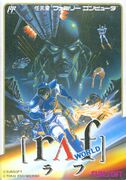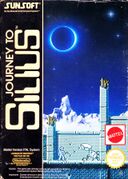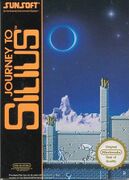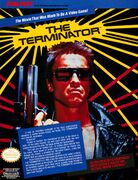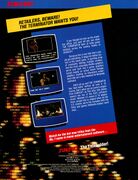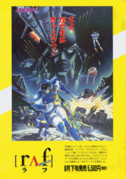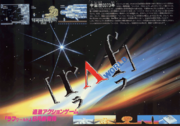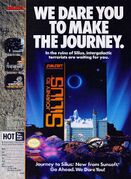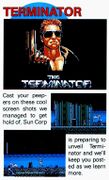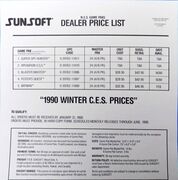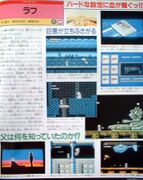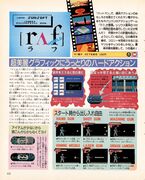Journey To Silius
Journey to Silius (also known as Rough World in Japan) is a platformer developed by Sunsoft's Tokyo Design Center division and published on 10 August 1990 in Japan, September 1990 in the US and 21 February 1991 in Europe. The game is set in the far future, and follows the quest of Jay McCray to avenge the death of his father and the destruction of a space colony in the Silius Solar System at the hands of robotic terrorists.
The game began development in late 1988 as a licensed game based on The Terminator. It was initially envisioned as an interactive film, which would allow them to stick closely to the original premise. The scope of such graphics-heavy gameplay did not make sense with the limited memory available to them however, and the game was retooled to become a platformer.
The license-holders were not pleased by the resulting usage of the Terminator property (it was decided that the platformer would be set exclusively in the future, a relatively minor portion of the film). When shown a near-completed build of the game, CLC representative Rand Marlis rejected it and revoked the license. Sunsoft was left with a completed game it could not sell, but rather than cancel the game outright director Hiroyasu Eguchi instead conceived an original setting (seeming based on that of earlier Sunsoft title Dead Zone) and by early 1990 the game had resurfaced as the tentatively-titled Operation SSS.
After receiving yet another name change, the game was finally released. The Japanese release was under the Tokai Engineering name, a dummy label which allowed Sunsoft to release more games in a year at the cost of being able to manufacture their own cartridges. While going largely unnoticed at the time, the game has become well-known today as a masterful if limited platformer. The music in particular has garnered significant praise, with a powerful score backed up by technically impressive techniques introduced with this title.
Alternative box art[edit]
Ads[edit]
Previews[edit]
- CES promotional video advertising The Terminator, including footage of the game early in development
Histories and Retrospectives[edit]
- https://www.gamingalexandria.com/wp/2019/07/terminator-why-so-silius/ — "Terminator, Why So Silius?" by Stefan Gancer
- https://www.gamingalexandria.com/wp/2020/12/sunsofts-the-terminator-development-history/ — Sunsoft’s The Terminator – Development History Revisited by Stefan Gancer
Books[edit]
- Memoirs of a Virtual Caveman by Ron Strangman. Includes an interview with Jay Moon.
Game credits[edit]
Source: In-game Staff roll.
- Directer
- Vegas (Hiroyasu Eguchi)
Chow-Mu-Sow (Kiharu Yoshida) - Programmer
- Nom (Masahito Nomura)
Hiro-Kun (Hiroaki Higashiya)
North-River (Masaaki Kitagawa)
Sleepy.H (Atsushi Hatano) - Graphic Designer
- You-Ri (Yuriko Yuzawa)
Idaten (Tohru Ida)
Hebereke (Ryoji Uchimichi)
N.Habari
Masashi (Masashi Tsukada) - Music Staff
- Nobuyuki (Nobuyuki Hara)
Marumo (Naohisa Morota)
About.SS (Shinichi Seya)
N.Kodaka (Naoki Kodaka)
Mabochan (Manabu Sakota) - Special Thanks
- Kitachin (Koichi Kitazumi)
Ring Ring
Mac (Masahiro Terao)
Right Hand
Nori (Noriko Ichikawa)
Hero
Asshi (Atsushi Sakai)
Dagawa-R (Hideyuki Udagawa)
J.Moon (Jay Moon) - And
- Players
